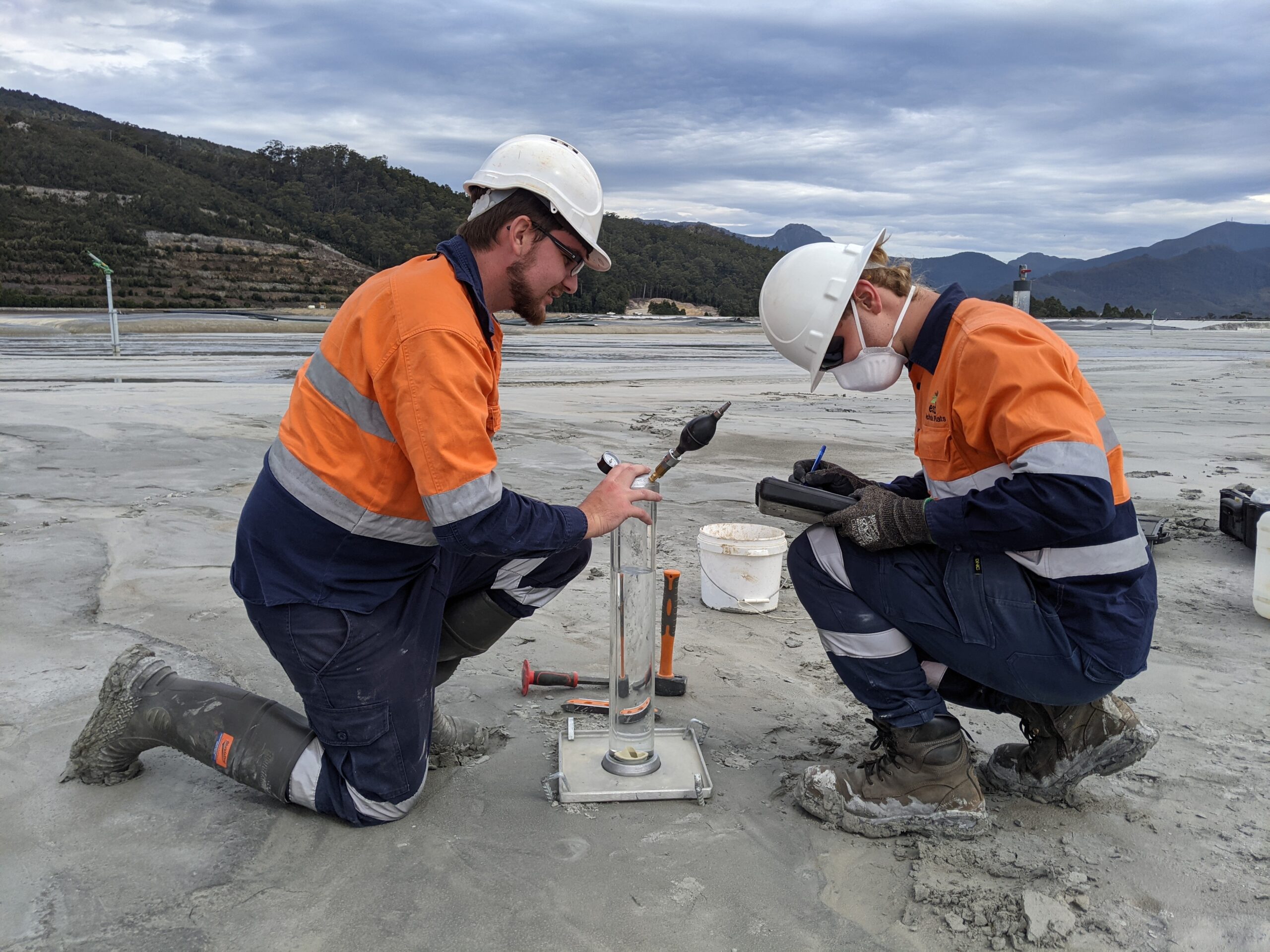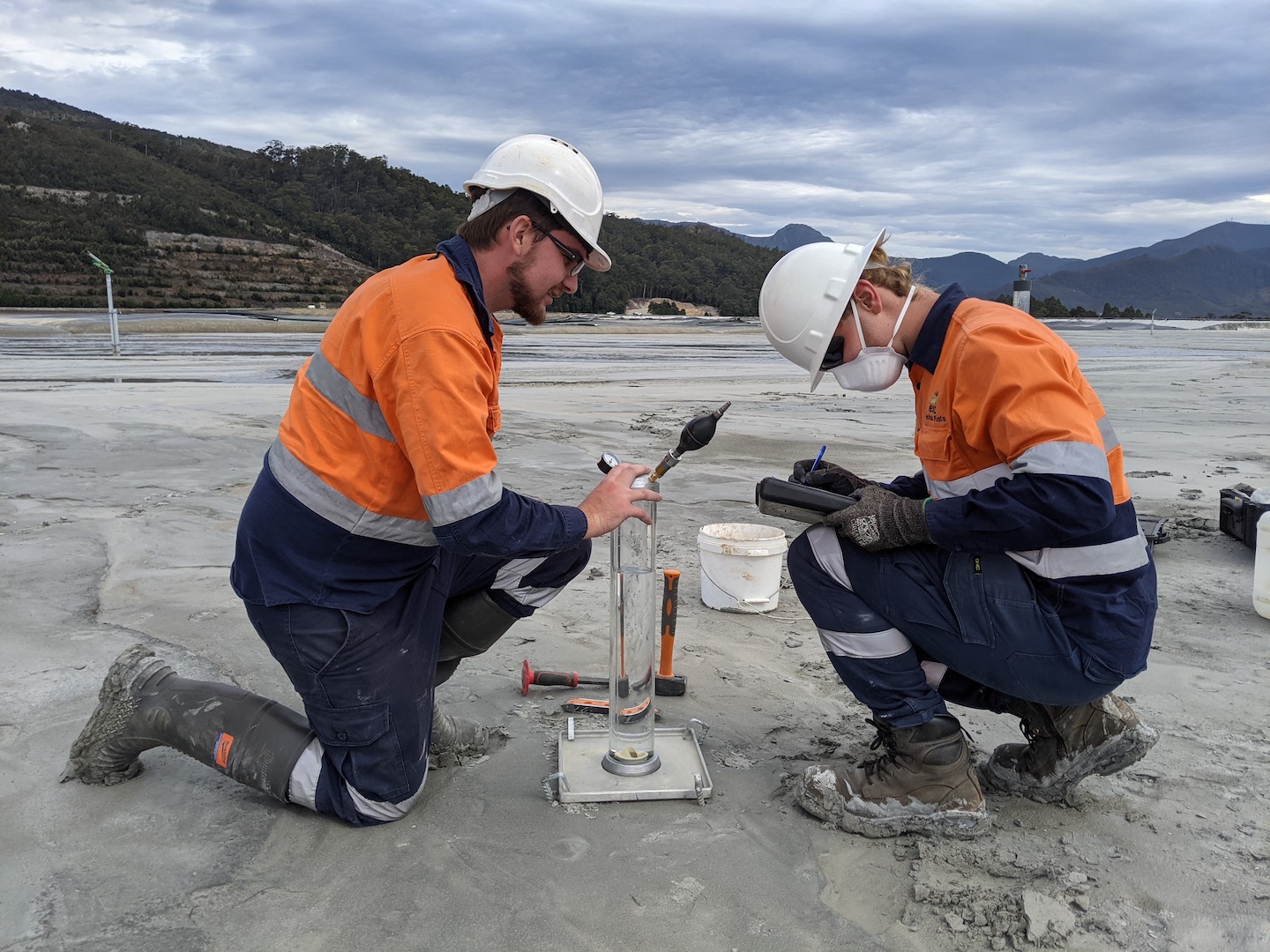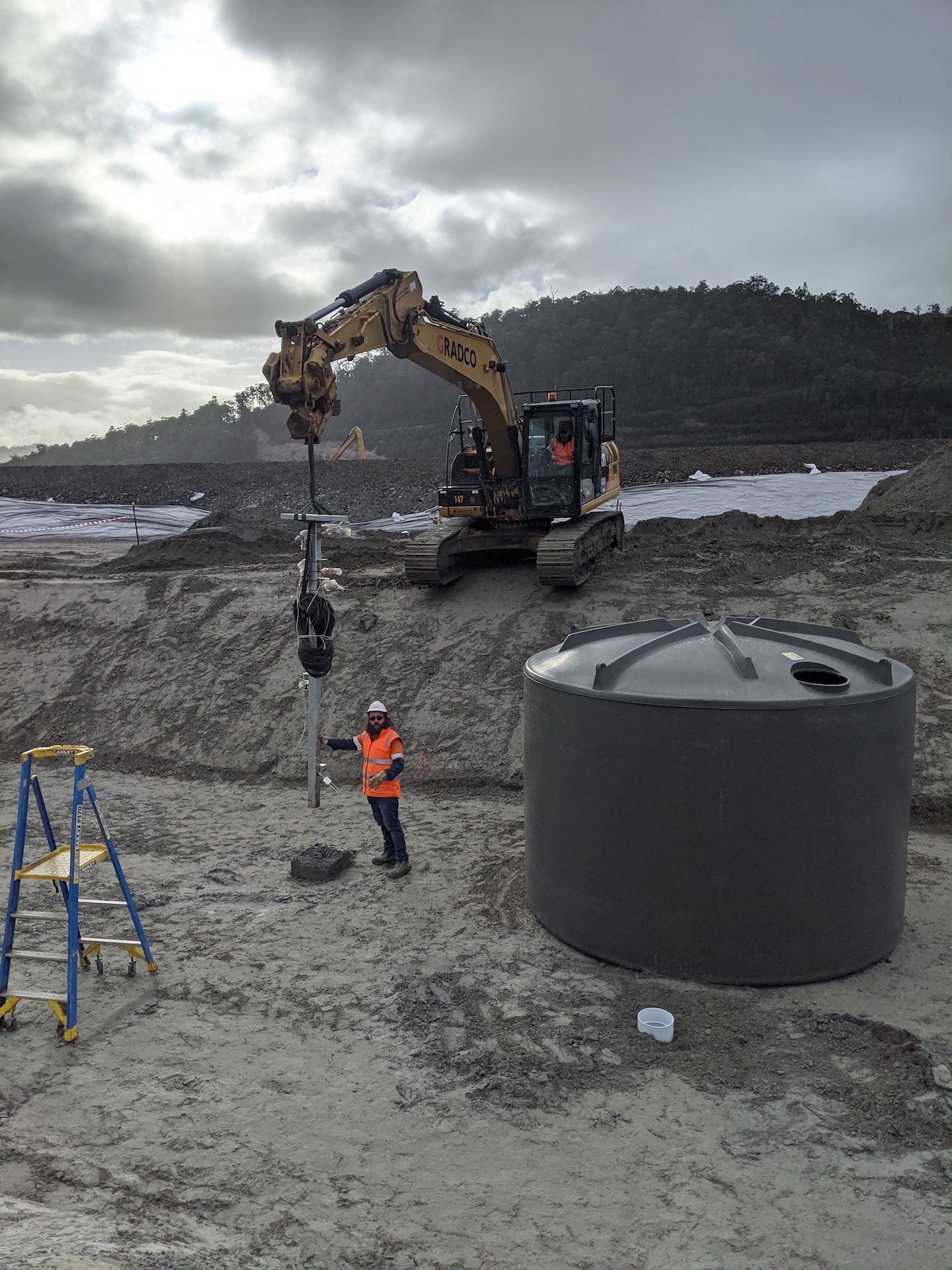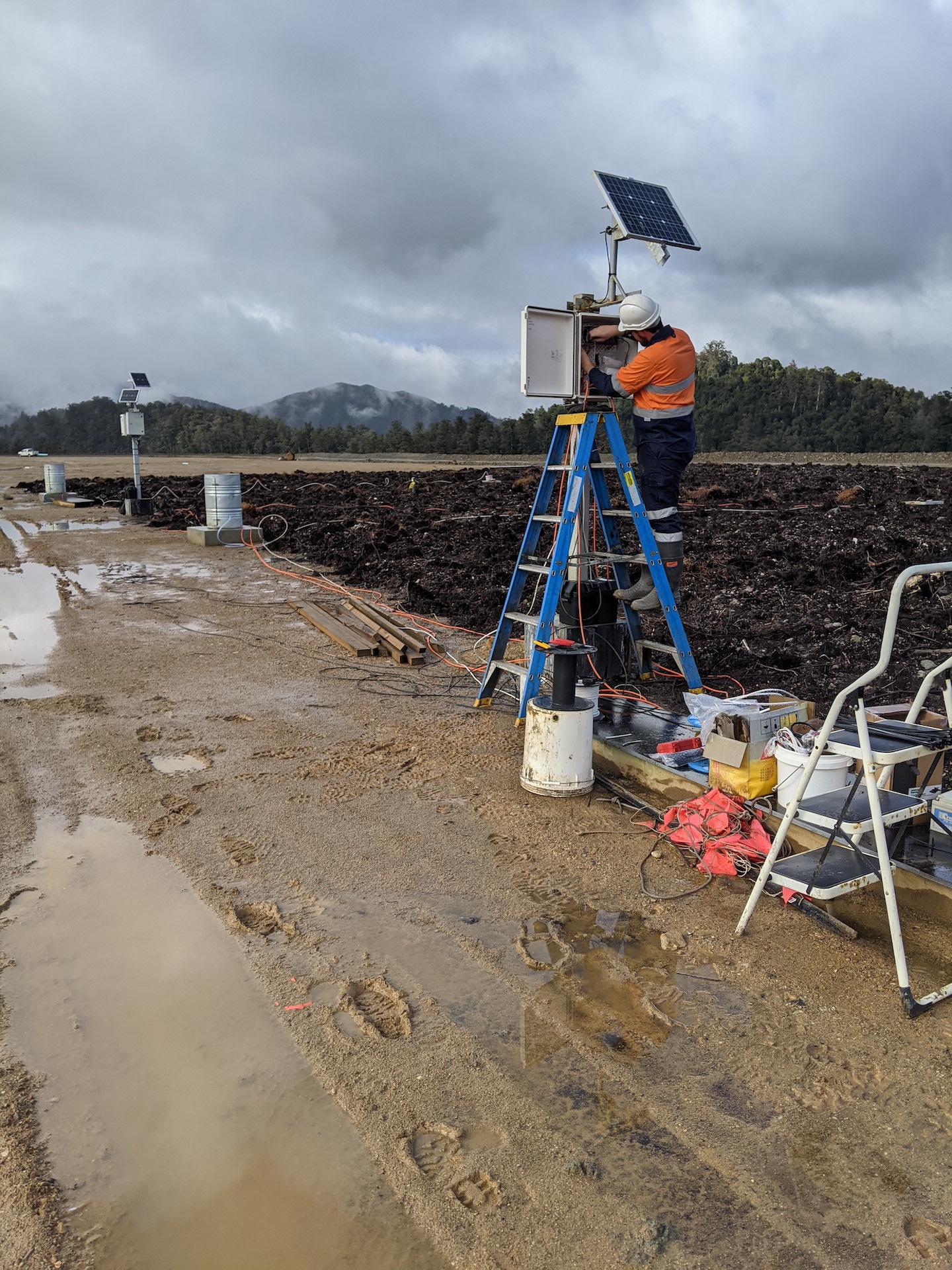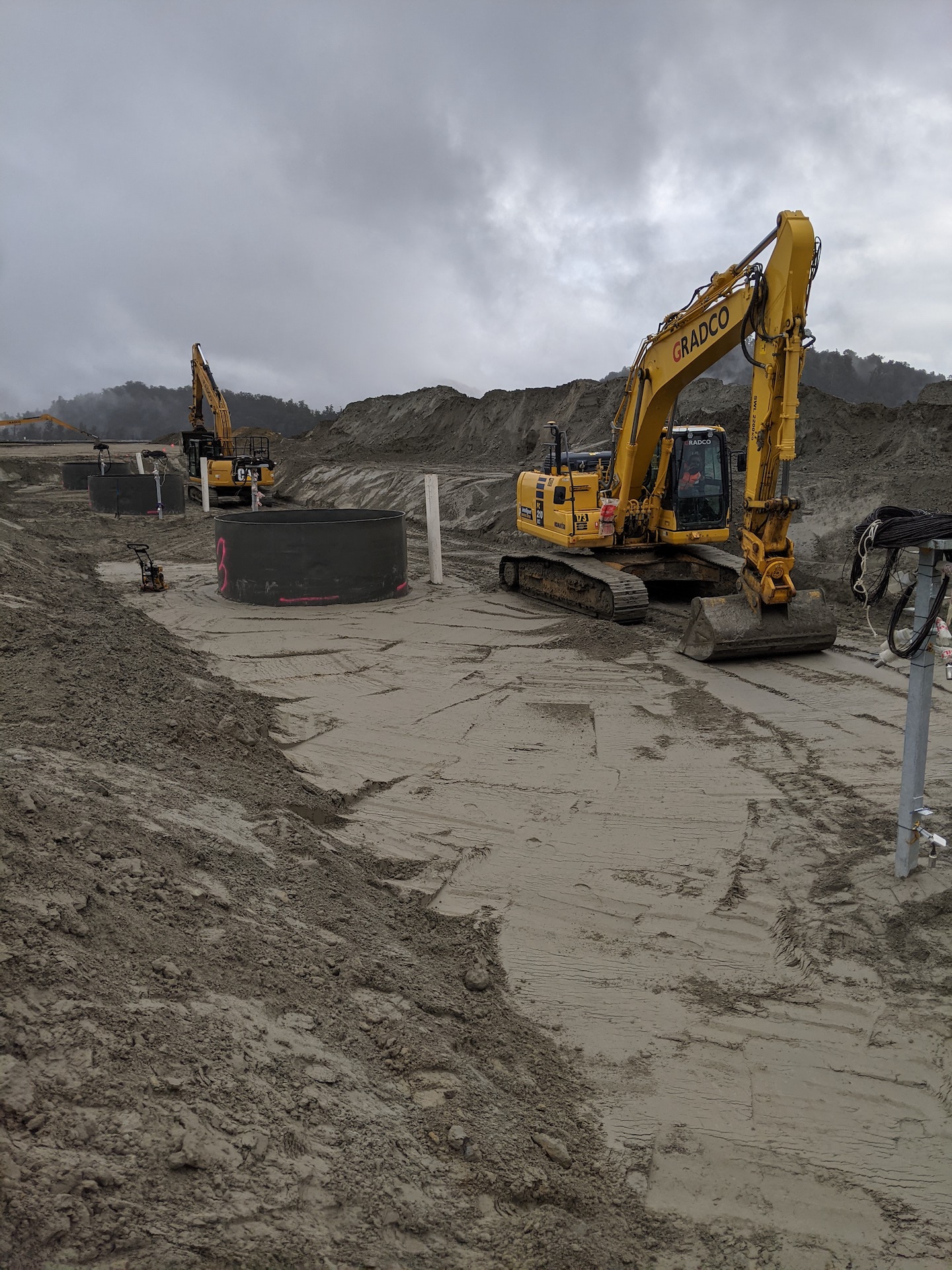Background
SGME has quantified the performance of store-and-release covers for an oceanic climate with high rainfall. The mine is located in the West Coast Range of Tasmania, Australia, and includes two waste rock and tailings storage facilities.
Objective
The mine receives more than 1,900 millimetres (mm) of rainfall per year. It has significantly less evaporation of approximately 700 mm per year. There is little soil available because of the escarped environment; however, potential rehabilitation borrow materials include glacial till and a limited quantity of undifferentiated Buttongrass moorland peat.
The mine developed a store-and-release cover and an enhanced store-and-release cover which contained a geomembrane layer to limit percolation and oxygen ingress into the tailings storage facility after rehabilitation. The covers complement the limited material balance; however, they are at risk of failure if tree roots are allowed to penetrate through the cover.
The mine is required to demonstrate the performance of the covers. SGME installed instruments in the cover that allows the measurement of percolation, rate of oxygen ingress and tree root density and depth.
Solution
The project encompasses three crucial phases for comprehensive environmental monitoring and analysis. Initially, test-pitting activities were conducted including in-situ saturated permeability testing and detailed profile descriptions using the universal soil classification system. This phase established essential baseline information about soil composition, permeability and structure.
The second phase focused on installing advanced monitoring equipment such as volumetric water and suction sensors, galvanic oxygen cells for measuring oxygen concentration, lysimeters for seepage collection and root density tubes for assessing vegetation cover. These instruments are strategically placed in moorland peat, glacial till and tailings beneath the covers to capture vital data on moisture content, gas concentrations, water movement and root system dynamics.
In the final phase which is ongoing, continuous monitoring and data collection is being done. This involves analysing in-situ data using numerical modelling techniques to predict cover performance over time. The monitoring program has already yielded valuable insights like oxygen profiles, wetting and drying patterns, soil water characteristic curves and root density. Preliminary numerical modelling has been conducted, and calibration efforts are ongoing based on accumulating in-situ data.
This comprehensive approach ensures that the project remains data-driven, facilitates informed decision-making and exemplifies effective management of environmental impacts.
SGME enhances cover and landform design through expertise in soil chemistry, physics, unsaturated soil mechanics and environmental engineering. Our innovative use of growth media amendments, revegetation strategies and engineering solutions improves cover and landform performance which reduces environmental risks and ensures long-term stability. We develop solutions that meet regulatory requirements and support sustainable practices by taking a holistic approach that considers safety, stability, sustainability, cost-effectiveness and capacity for post-mining land uses. SGME’s commitment to continuous improvement through ongoing learning about technological advancements, regulatory changes and industry best practices ensures our designs remain innovative and sustainable; thereby delivering effective solutions for mine waste management that contribute to having enduring environmental protection and achieving responsible post-mining land uses.
